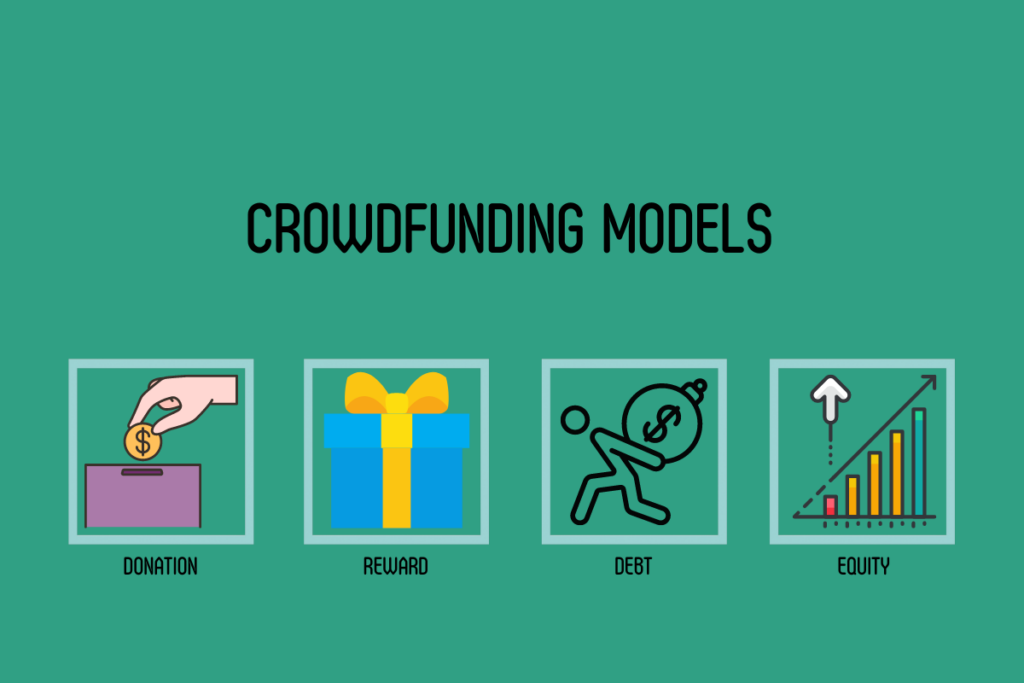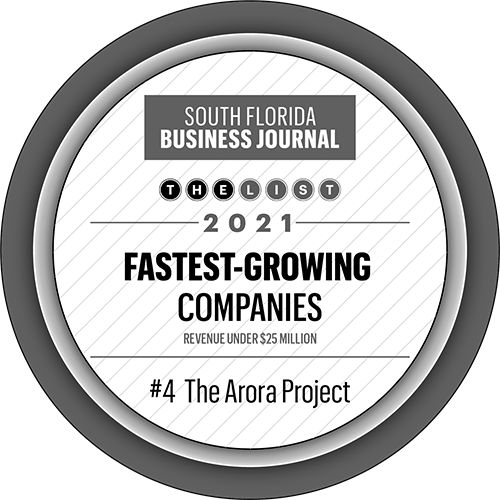
Equity Crowdfunding for retail investors recently celebrated its 10th birthday—but even with that milestone under its belt, it’s still relatively new to the scene. But what came before equity crowdfunding? What pushed the market demand for this type of investing? And why is equity crowdfunding important to the investing market as we know it today?
In this edition of the Arora Blog, we’re taking a trip around the intricate and fascinating world of crowdfunding to answer all of those questions and more. Buckle up.
A *Very* Brief History
In 2012, then-President Obama signed the JOBS Act into law, launching a new branch of crowdfunding: equity. Prior to this legislation, only venture capital firms, hedge funds, or certified angel investors were legally allowed to invest in private startups.
The JOBS Act was then expanded in 2016 to include provisions that would allow non-accredited or retail investors to invest in these pre-IPO companies. That means in the grand scheme of things, equity crowdfunding is still in its infancy!
But crowdfunding itself is far from being a new concept; in fact, instances of it have been recorded for centuries…
The Real OGs
When many people hear the word crowdfunding, they think of rewards or donation crowdfunding like those found on Indiegogo, Kickstarter, or GoFundMe. That’s understandable since those were the only legal forms of crowdfunding for many years.
While these two methods of crowdfunding have been around for a long time, it’s only recently that they reached their pinnacle of popularity thanks to the internet. It’s possible to end up with donors you’ve never met or solicited, simply because they happened to come across your campaign online. Twenty years ago, that would have been unheard of!
Rewards Crowdfunding
In the early days of crowdfunding, the only legal incentive for attracting money was to offer some form of reward. And today, many microbusinesses continue to use rewards crowdfunding as seed funding for their projects.
The rewards crowdfunding process is reasonably simple and unregulated by governing bodies, although each funding portal will likely have their own regulations. Founders create a campaign page by describing their project and fundraising goal on their chosen platform. As with all crowdfunding, they must run a robust marketing campaign to drive the crowd to their page. Then, in return for donations, the business provides rewards.
For example, a comic book author might have reward tiers such as:
- $10 donors will receive a digital copy of the comic
- $50 donors will receive both a physical and digital copy of the comic
- $100 donors will receive previous tiers, plus an exclusive T-shirt with the comic’s main character and title on it
- $150 donors will receive previous tiers, plus a character designed to look like them in the finished comic
Meanwhile, the money raised will go towards product development costs such as materials, equipment, designers, writers, or marketing to announce the product’s release.
Rewards Crowdfunding Statistics:
- According to NerdWallet, there are about 19X as many rewards campaigns as equity campaigns
- Fewer than a quarter (22.9%) of all rewards crowdfunding campaigns end up being successful
- However, of that 22.9%, nearly three-quarters (78%) exceed their funding goals
- The average rewards crowdfunding campaign earns $5,270
- With a total of $1.34 billion in investments on Kickstarter alone, video games are the largest revenue generators in rewards crowdfunding
The five largest reward crowdfunding raises to date are:
- Star Citizen, $457 million (ongoing): A yet-unreleased video game created by Cloud Imperium Games
- Surprise! Four Secret Novels by Brandon Sanderson, $41.75 million: Popular fantasy author Brandon Sanderson launched a campaign to raise $1M to release four novels—and then raised more than 40X that in just under a month
- Pebble Time, $20.3 million: The second generation of the Pebble smartwatch
- FlowHive, $14.95 million: A domesticated bee hive box with a valve where the beekeeper can extract honey from the hive without disturbing the bees
- Coolest Cooler, $13.28 million: A portable 60 quart cooler containing a battery powered rechargeable blender, waterproof Bluetooth speaker, USB charger, cutting board, plates, and more
Donation Crowdfunding
Donation crowdfunding, on the other hand, operates exactly how it sounds: donation only. Donors do not receive anything for their money other than the feeling of doing good in the world—which is sometimes incentive enough to fund massive campaigns!
The process of launching a donation crowdfunding campaign is very similar to rewards crowdfunding, and is similarly unregulated. After creating a campaign page detailing the reason people should donate money—often to fund medical procedures or social justice causes in the United States—the person launching the campaign then advertises it to attract donations. Without proper marketing, donation crowdfunding campaigns are statistically much more likely to fail.
Donation Crowdfunding Statistics
- Donation crowdfunding has raised over $10 billion from 130+ million donations worldwide
- A new donation fundraiser is started every eight seconds
- Mostly due to the overwhelming number of campaigns launched daily, donation crowdfunding has the highest failure rate—91% in 2021
- 16% of campaigns receive no donations at all
- $4,000,000 is raised daily on GoFundMe, the world’s largest donation crowdfunding platform
The five highest-grossing donation campaigns to date are:
- America’s Food Fund, $45.1 million: This campaign works with World Central Kitchen, No Kid Hungry, Feeding America, Save the Children, and the Urban School Food Alliance to provide food to the most vulnerable in society
- Time’s Up Legal Defense, $24.2 million: Launched in the wake of the Me Too movement, this fund attracted thousands of donors wanting to help victims of sexual assault and harassment
- The Official George Floyd Memorial, $14.7 million: Established to benefit Floyd’s daughter and family, and to pay for funeral and legal expenses after his murder by a police officer in June 2020
- Funds for Humboldt Broncos, $11.89 million ($15.2 million CAD): Created after a bus carrying a Canadian high school hockey team collided with a semi truck that had run a stop sign, killing 16 people
- Las Vegas Victims’ Fund, $11.87 million: After sixty people were killed and over 800 injured in a shooting at a music festival, this fund was established for deceased victims’ families and victims left permanently disabled
- Dishonorable Mention:
- We Build the Wall Fund, $25 million: Launched to build sections of a wall between the United States and Mexico, this campaign quickly became the second largest donation campaign in history. However, accusations of improper use of funds and fraud charges against the launch team got this campaign shut down and all money was refunded to donors
What About Debt Crowdfunding?
Whereas equity crowdfunding gives equity in exchange for investments and is not considered a debt in a company’s books, debt crowdfunding is just that—debt. Companies sign a legally binding agreement with investors to pay back investments with interest. The only way to break the contract is by filing for bankruptcy.
Debt crowdfunding is not considered riskier than other forms of crowdfunding, making it a viable option for companies that might not have traction enough to launch an equity raise. And because a company is asking for small investments from a wide pool of investors, it’s potentially much easier to get funding than from a bank.
Advocates of debt crowdfunding say it offers more favorable terms, lower interest rates, quicker approval times, and a simpler application process than other types of debt financing. However, there is no oversight to debt crowdfunding, and there is no statistical evidence that the contracted terms will be more favorable.
How Does Equity Fit In?
The wealth disparity in the United States is massive, well-documented, and all but irrefutable. Equity crowdfunding was created in an effort to change that. In fact, equity crowdfunding has likely made some of the greatest steps towards financial democracy the world has ever seen—no exaggeration!
Venture capitalists (VCs) and angel investors have long understood the way to make the most money from investing in a company is to invest before the company’s growth phase. By the time most people are purchasing on the stock market, VCs and angels are exiting with full pockets.
Generally, a VC or angel will thoroughly vet a company by combing through its financials, checking its market viability, calculating its transferable value, considering the company’s competition, and interviewing its management team. If the company seems as though it will achieve large returns based on the firm’s investigation, the company can get massive capital influxes—and the investor then earns a lot of money if the company is successful.
Since the legalization of equity crowdfunding, basically everyone can potentially earn a lot of money from investing in those same startups. Yeah, we said EVERYONE. Other than age limits (investors must be 18 or older) and some location limits (many U.S. funding platforms do not accept investments from the U.K. or Canada due to securities laws), there’s nothing stopping the average person from investing and achieving the same high returns as a VC or angel.
It should be noted that it’s statistically improbable that a retail investor will earn enough returns to buy an island or retire early. The annual investment cap for nonaccredited investors is $2,000 or 5% of their income, whichever is greater—far below the amount it would take to receive 7-figure returns.
A Real-Life Case Study to Prove ECF’s Importance
In 2012, virtual reality tech startup Oculus Rift launched a rewards crowdfunding campaign on Kickstarter. For a minimum investment of just $300, investors would enable Oculus Rift to develop their headset, and in exchange would receive a headset once it made its market debut.
Though it wasn’t one of the most successful campaigns of all time, it garnered a cool $2.5 million in investments—more than enough to launch Oculus Rift into the company as we know it today. It could even be said that without their reward investors, Oculus Rift wouldn’t have made it through the valley of death (the period of $0 revenue when a startup’s costs outpace their sales).
Then, just two years after the close of the campaign that put them on the map, Oculus Rift sold an ownership stake to Facebook (now Meta)…for $2 BILLION. But what happened to the investors who funded Oculus Rift’s first batch of headsets?
Well…they got their headsets—and that’s all.
At the time, equity crowdfunding wasn’t yet legal for nonaccredited investors. Because this was a rewards crowdfunding campaign, investors were not owed a cut of profits from the sale—even though their investments arguably drove Oculus Rift to that sale and all but guaranteed their success.
By some estimates, those $300 investments would have been worth upwards of $20,000 apiece had investors been able to invest for equity instead of merely for rewards.
And that’s why equity crowdfunding is important to the market. Everyone deserves to get returns for investing in startups, and with ECF they can.
Ready to Crowdfund?
If you’re a founder thinking of launching a crowdfunding raise, we encourage you to consider equity crowdfunding. The industry is growing 3X faster than any other crowdfunding branch, and the potential payoffs are mindblowing.
And if you need a little guidance with meeting your capital funding goals, we’d love to help. Our team of equity crowdfunding experts can get you where you want to go.








